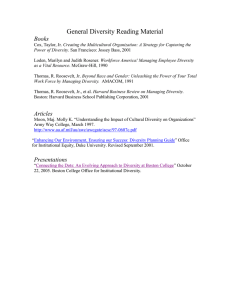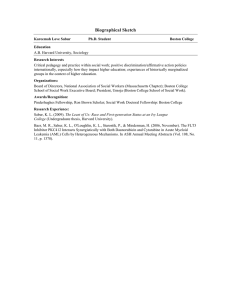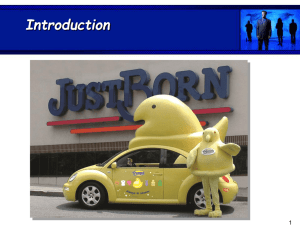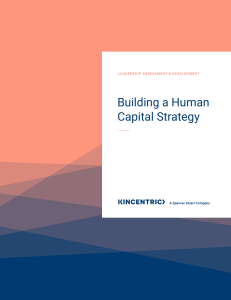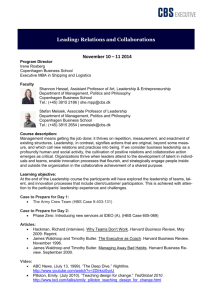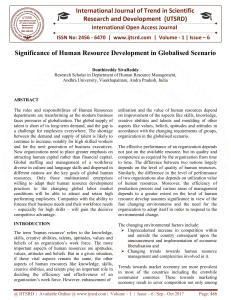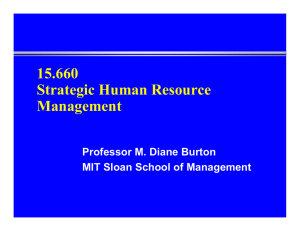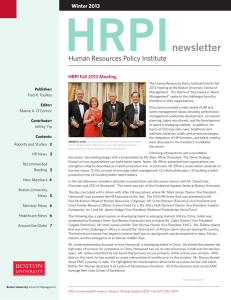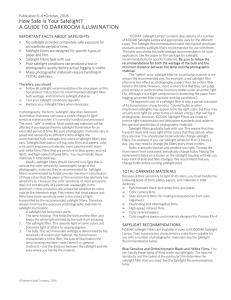15.660 Strategic Human Resource Management MIT Sloan School of Management
advertisement
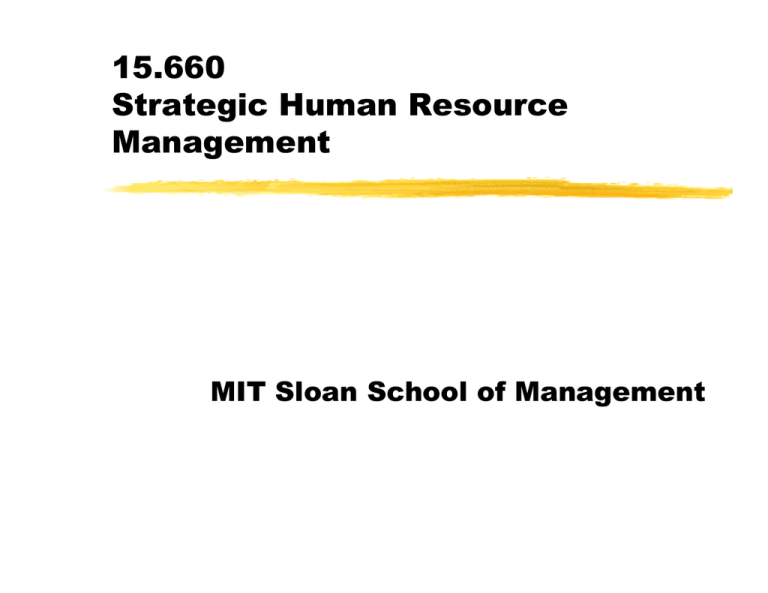
15.660 Strategic Human Resource Management MIT Sloan School of Management Our Goal for SHRM: To understand the strategic issues in using Human Resources for sustainable competitive advantage and how to implement the changes necessary to achieve this. This requires that we be able to: ? ? Think systematically and strategically about managing human assets Understand what really needs to be done to implement these policies. HR Creating Value Human Resource Management Practices Employees •Morale •Commitment •Productivity •Competence Customers •Satisfaction •Loyalty •Commitment Investors How does HR affect profitability, cost, growth, cash flow, and margin? Adapted from: David Ulrich, Human Resource Champions, p.247 “The War for Talent” “In the new economy, competition is global, capital is abundant, ideas are developed quickly and cheaply, and people are willing to change jobs often. In that kind of environment… all that matters is talent… superior talent will be tomorrow’s prime source of competitive advantage.” Chambers, E. et al. (1998) “The War for Talent.” McKinsey Quarterly, 2-15 Case Studies ? ? ? ? ? ? ? ? Southwest Airlines Portman Hotel Morgan Stanley Slade Company NUMMI Saturn ServiceMaster John Snow Institute ? ? ? ? ? ? ? Eastern Airlines Safelight Autoglass Visionary Design Systems SAS Institute Harrah’s Entertainment Springfield ReManufacturing Nordstrom Two Mysteries ? ? How have these companies achieved extraordinary performance with people who are no different from those employed by the competition? If what they are doing is so understandable, why haven’t their competitors simply replicated them and achieved similar competitive advantages? Several Integrative Themes ? The role of HR in the execution of strategy ? The importance of alignment and consistency of HR with business strategy ? The range of HR levers available to managers Organizational Alignment Strategy/Vision Executive Leadership • What business are we in? • How will we compete? • What’s our vision ? • Model • Behavior • Symbolic action Key Success Factors • What specific tasks have to get done to implement the strategy? Human Resources Culture • Do people have the necessary competencies? • Are they motivated? • What are the norms, values, attitudes, and behaviors needed? Formal Organization • Structure? • Rewards? Controls? Careers? Strategic HR Consistency Business Unit Strategy/ Vision / Objectives • Products/Services • Customers/Markets • Technology • Timing Key Success Factors 1. Human Resource Levers • Vision\Purpose • Recruitment/Selection • Training/Development • Reward and Recognition • Careers/Promotions • Job Design/Teamwork • Measurement • Information Sharing • Culture + + + + + + 0 + + 2. 3. 4. 5. Degree of Alignment (- / 0 / + ) 0 0 0 + + 0 + + + 0 + + 0 0 0 0 0 0 0 0 0 0 + 0 0 + 0 + Looking Back on the course…. Exposure to some intriguing HR practices - Vision, values, and key success factors - Open Book Management (critical #s) - Team-based systems (social control) - Selection for “fit” as well as skills - Investing in people (intellectual capital) - Long-term employment vs. free agency - Psychological vs. financial ownership - Performance management HR’s Role ? The job of Human Resources is NOT primarily to: Keep the company out of court ? Enforce rules and maintain consistency. ? Manage administrative processes. ? Tell people “No”. ? ? HR’s job is to: Help build and reinforce the company’s values and culture ? Play a leadership role in building capabilities that ensure the successful execution of business strategy. ? “The most effective way to forge a wining team is to call on the player’s needs to connect with something larger than themselves.” Phil Jackson Former coach of the Chicago Bull, now coach of the L.A. Lakers References and Resources ? ? ? ? ? ? James N. Baron and David M. Kreps. 2000. Strategic Human Resources: Frameworks for General Managers. New York: John Wiley & Sons. Roger Brown. 1986. Social Psychology, The Second Edition. New York, Free Press. Charles O'Reilly and Jeffrey Pfeffer. 2000. Hidden Value: How Great Companies Achieve Extraordinary Results With Ordinary People. Boston, MA: Harvard Business School Press. Jeffrey Pfeffer. 1988. The Human Equation: Building Profits by Putting People First. Boston, MA: Harvard Business School Press. David Nadler and Michael Tushman. 1998. Competing by Design: The Power of Organizational Architectures. New York: Oxford University Press. Michael Tushman and Charles O’Reilly. 1997. Winning through Innovation: A Practical Guide to Leading Organizational Change and Renewal. Boston, MA: Harvard Business School Press
